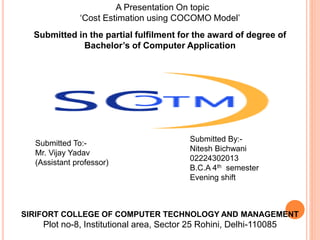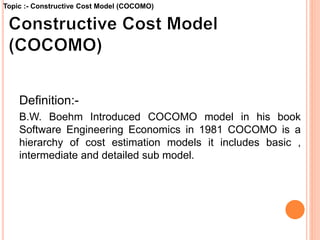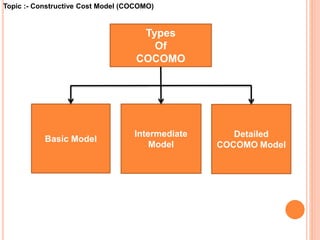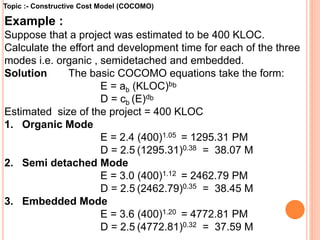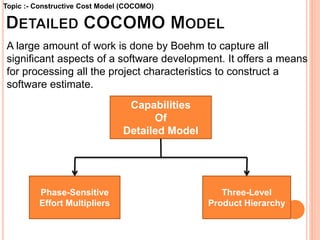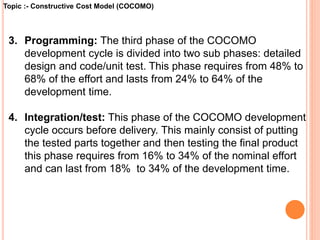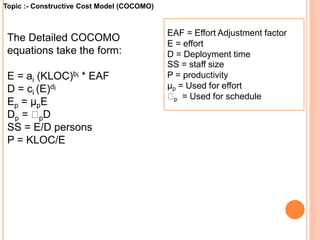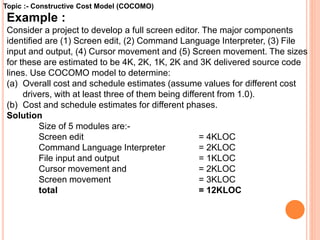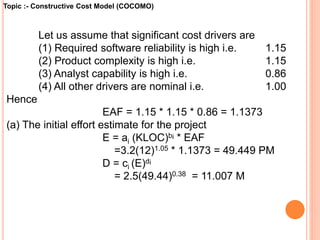This document presents information on cost estimation using the COCOMO model. It discusses the basic, intermediate, and detailed COCOMO models. The basic model uses effort multipliers, staff size, and productivity equations to estimate effort and schedule for projects of different modes (organic, embedded, semidetached). The intermediate model adds 15 cost drivers to improve accuracy. The detailed model incorporates three product levels, phase-sensitive effort multipliers, and effort/time fractions for each development phase.
